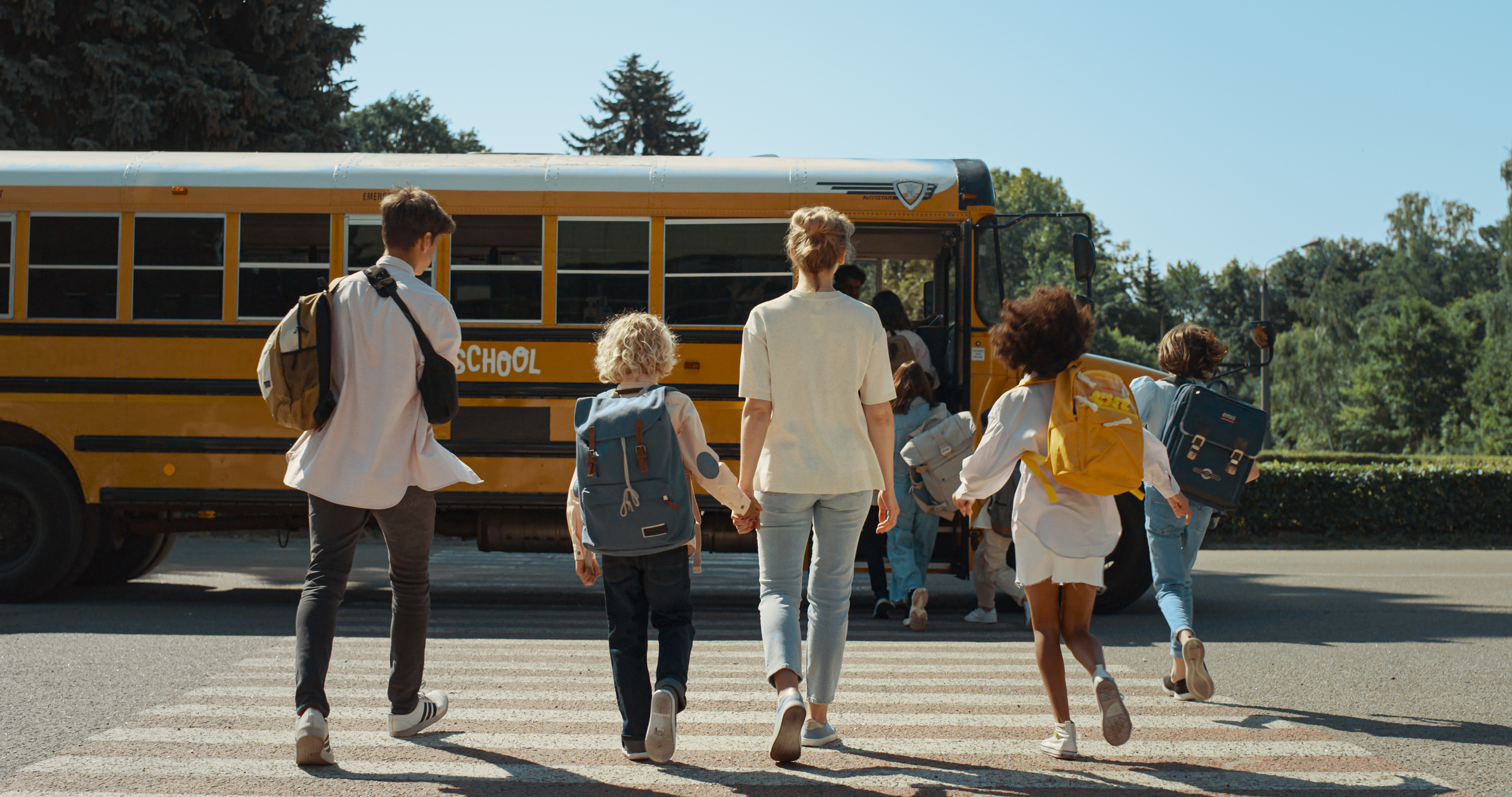
Each school day, millions of children across the nation ride school buses. According to the National Highway Traffic Safety Administration (NHTSA), school buses are one of the safest vehicles on the road, with less than 1% of all traffic fatalities involving children on school transportation vehicles. Despite this impressive safety record, children face greater risks when approaching or leaving a school bus. It’s crucial for drivers, parents, and students to understand and adhere to school bus safety protocols.
Stop for School Buses: It’s the Law
When you see a school bus slowing down or stopping, it’s vital to pay attention not only to the bus but also to the surrounding area. Children often wait several feet away from the bus and may cross the street when boarding or getting off. Drivers must stop for school buses and should never attempt to pass.
In every state, passing a school bus with an extended stop-arm and flashing red lights is illegal. This law exists to protect children who are boarding or exiting the bus. Ignoring it can have dire consequences and lead to severe legal penalties.
Understanding School Bus Lights
Familiarizing yourself with the meaning of school bus lights can enhance safety:
- Yellow flashing lights indicate the bus is preparing to stop to load or unload children. Drivers should slow down and prepare to stop.
- Red flashing lights and extended stop-arms indicate the bus has stopped, and children are getting on or off. Drivers must stop and wait until the red lights stop flashing, the stop-arm is withdrawn, and the bus moves before they can start driving again.
Parental Guidance for Child Safety
Parents play a crucial role in ensuring their children’s safety around school buses. Here are some essential tips:
Before the Bus Arrives
- Ensure your child arrives at the bus stop at least five minutes before the bus is scheduled to arrive.
- Show your child where to wait for the bus — at least ten feet (five giant steps) away from the curb.
- Remind your child that the bus stop is not a place to run or play.
Getting On and Off Safely
- Teach your child to wait until the bus comes to a complete stop, the door opens, and the driver gives the okay to board or disembark.
- Encourage the use of handrails to prevent falls.
Always Use Caution Around the Bus
- Children should never walk behind a school bus.
- If a child needs to cross the street in front of the bus, they should walk to a spot at least ten feet in front of the bus and make eye contact with the driver before crossing.
- If a child drops something near the bus, they should inform the driver instead of trying to pick it up themselves.
School Buses: Different by Design
School buses are among the most regulated vehicles on the road. Their design includes several safety features such as flashing red lights, cross-view mirrors, and stop-sign arms. Buses also have protective seating, high crush standards, and rollover protection features.
While seat belts are crucial in passenger vehicles, school buses utilize a different safety system known as “compartmentalization.” This concept involves strong, closely-spaced seats with energy-absorbing seat backs that protect children without the need for seat belts. However, small school buses (weighing less than 10,000 pounds) must have lap or lap/shoulder belts at all designated seating positions due to their similarity in size and weight to passenger cars and trucks.
Legal Assistance for School Bus-Related Incidents
Despite the high safety standards, accidents can still occur. If you or your child has been involved in a school bus-related accident, understanding your legal rights is essential. Finkelstein & Partners specializes in handling such cases, ensuring that you receive the necessary support and compensation. We are committed to holding negligent parties accountable and protecting your family’s rights.
For more information on school bus safety or legal assistance, please contact us today. Let us help you navigate the complexities of personal injury law and ensure your child’s safety on the road.
